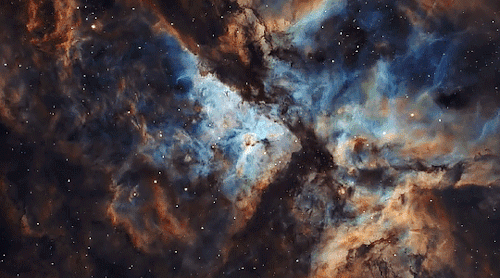Storm by JSway Art
NOPE (2022) dir. Jordan Peele
NOPE (2022) dir. Jordan Peele
Photo

Photo

nevver:The lost world, Michael Kerbow
ofallingstar: The Antique (2018)
fyblackwomenart: “Alrighty Aphrodite ” by Saint Hedge
Cosmic Sunset- Jin Dot
Cosmic Sunset- Jin Dot
SAUCERKOMMAND 2024-04-03 16:48:25
talonabraxas: The Infinite Soul 𝐁𝐫𝐚𝐧𝐝𝐨 ☥
Chromatic Inferno.
TYLA IN VENUS (2024) @tyla
Stellar spire in the Eagle Nebula.
ALT
Stellar spire in the Eagle Nebula.
Credit: NASA, ESA, and The Hubble Heritage Team (STScI/AURA).
parliamentfunkadelic:Dr. Funkenstein yall.
2024 March 22
2024 March 22
Phobos: Moon over Mars
Image Credit: NASA, ESA, Zolt Levay (STScI) - Acknowledgment: J.Bell (ASU) and M.Wolff (SSI)
Explanation: A tiny moon with a scary name, Phobos emerges from behind the Red Planet in this timelapse sequence from the Earth-orbiting Hubble Space Telescope. Over 22 minutes the 13 separate exposures were captured near the 2016 closest approach of Mars to planet Earth. Martians have to look to the west to watch Phobos rise, though. The small moon is closer to its parent planet than any other moon in the Solar System, about 3,700 miles (6,000 kilometers) above the Martian surface. It completes one orbit in just 7 hours and 39 minutes. That’s faster than a Mars rotation, which corresponds to about 24 hours and 40 minutes. So on Mars, Phobos can be seen to rise above the western horizon 3 times a day. Still, Phobos is doomed.
SAUCERKOMMAND 2024-04-02 21:21:16
Photo

psikonauti: Isaac Abrams (American, b. 1939)Psychedelic…
Author’s Instagram: Silvana Mendes

Author’s Instagram: Silvana Mendes
Claudia Griesbach-Martucci – In Good Company, 2023
Claudia Griesbach-Martucci - In Good Company, 2023
SAUCERKOMMAND 2024-04-02 14:38:34
Evangelos Faeinos (1918-1985) — Fruits [acrylic, charcoal, and mixed media on panel, 1976-1978]
Evangelos Faeinos (1918-1985) — Fruits [acrylic, charcoal, and mixed media on panel, 1976-1978]
SAUCERKOMMAND 2024-04-02 12:19:05
The Goddess Nekhbet, Temple of Hatshepsut, New Kingdom, ca. 1479-1458 B.C., Charles K. Wilkinson…
The Goddess Nekhbet, Temple of Hatshepsut, New Kingdom, ca. 1479-1458 B.C., Charles K. Wilkinson Illustration
Facsimile of a falcon protecting the king, New Kingdom, ca. 1479-1458 B.C., Charles K. Wilkinson Illustration
“Forbidden knowledge” Anthony Machuca
“Forbidden knowledge”
Anthony Machuca
70sscifiart: Bruce Pennington
SAUCERKOMMAND 2024-04-02 11:15:03
Neptune Planet
Neptune Planet
SAUCERKOMMAND 2024-04-01 21:41:24
Yemanjá, Rafa Cotrim

Yemanjá, Rafa Cotrim
steampunktendencies:“Self Organization”, aka, The octopus…

www.steampunktendencies.com

www.steampunktendencies.com

www.steampunktendencies.com

www.steampunktendencies.com
“Self Organization”, aka, The octopus sculpture Bronze, 3'x3’, found typewriter by Oakland artist Courtney Brown
(via Colossal)
🪼 | source
🪼 | source
Shades of Azul 877, Saatchi Art

Shades of Azul 877, Saatchi Art
spacewonder19: Full Moon in April by astrofalls
wonders-of-the-cosmos: Conjunction: Jupiter and Saturn…
She Who Holds The Light, Manzel Bowman

She Who Holds The Light, Manzel Bowman
WR 128 (center) and Sh2-84 (upper left) // Jerry Yesavage
WR 128 (center) and Sh2-84 (upper left) // Jerry Yesavage
Photo

‘alta moda’ by andrea brocca.
‘alta moda’ by andrea brocca.
achai maper. 📸 daniel archer.
70sscifiart: Art for ‘Close Encounters of the Third Kind,’ by…
oninoheizo:Toshiba Transistor Radio model 6TR-92 “The Rice…
Photo

fyblackwomenart: “Rihanna” by Laura H. Rubin
unexplained-events: Jellyfish SpriteRed sprites or the…

Jellyfish Sprite
Red sprites or the tentacle-like spurts of red lightning in the sky during a storm are sometimes referred to as Jellyfish Sprite (because of their shape). There are also some that are vertical columns of red light and those are called carrot sprites.
They are ultra fast electricity traveling through the atmosphere towards space and are extremely rare (they last a tenth of a second). They can also be seen from space.
The picture above was captured on Mt. Locke in Texas (July 2nd, 2020) by Stephen Hummel.
Andreea Dumuta
Andreea Dumuta
Adut Akech by Chris Colls for Elle US Magazine, August 2021.
Adut Akech by Chris Colls for Elle US Magazine, August 2021.
Photo

Photo

The Nebulae of Auriga Widefield (Flaming Star, IC 410, Spider Nebula, Fly Nebula)
The Nebulae of Auriga Widefield (Flaming Star, IC 410, Spider Nebula, Fly Nebula)
Left Eye for No Scrubs
Left Eye for No Scrubs
talesfromweirdland: City of the future: retro sci-fi art by…







City of the future: retro sci-fi art by illustrator John Berkey (1932-2008).
Most of these were published in Popular Mechanics, I think; but Berkey also did a series of Otis ads.
Photo

Photo

SAUCERKOMMAND 2024-03-27 15:14:55
color-palettes: Journeys to Jupiter – Submitted by…
SAUCERKOMMAND 2024-03-27 14:09:47
world-beauty: The Dark River to Antares Credits: Jason Jennings
SAUCERKOMMAND 2024-03-26 18:05:49
Photo

SAUCERKOMMAND 2024-03-26 00:36:27
Photo

Photo

SAUCERKOMMAND 2024-03-25 23:31:36
world-beauty: The Weather on Mars Credits: WFPC2, JPL, Caltech,…
SAUCERKOMMAND 2024-03-25 10:32:56
Photo

wonders-of-the-cosmos: NGC 6960 (Western Veil nebula)…
fyblackwomenart: “1970s African Woman” by Sebastian Star
Photo

SAUCERKOMMAND 2024-03-24 14:40:33
wwwwwwwwwwww123: Xユーザーの五島純さん: 「ぶ〜んしゃこーちゃん塗りました。 可憐…
polychroniadis:Delphine Burtin, ‘Encouble’.
Spirit of a Warrior, Loyiso Mkize

Spirit of a Warrior, Loyiso Mkize
sunnation: Beach Stone Totem-unknown phtographer
Photo

a group of starfish is called a galaxy.
a group of starfish is called a galaxy.
mirror palais “laces and silks” collection .
mirror palais “laces and silks” collection .
Yevonde Middleton (aka Madame Yevonde) (English,1893-1975)
Yevonde Middleton (aka Madame Yevonde) (English,1893-1975)
Shell, 1937
tri-colour separation negative
Javier Senosiain
Javier Senosiain
Nautilus House, México, 2007
stonerparty: post-web
SAUCERKOMMAND 2024-03-23 22:24:02
Caldwell 63, Helix Nebula (Infrared)
Caldwell 63, Helix Nebula (Infrared)
Photo

Photo

Photo

jareckiworld: Isaac Abrams — Spring Again (acrylic on canvas,…
SAUCERKOMMAND 2024-03-22 19:33:48
Photo

SAUCERKOMMAND 2024-03-22 17:34:57
SAUCERKOMMAND 2024-03-22 17:02:15
Photo






























































































